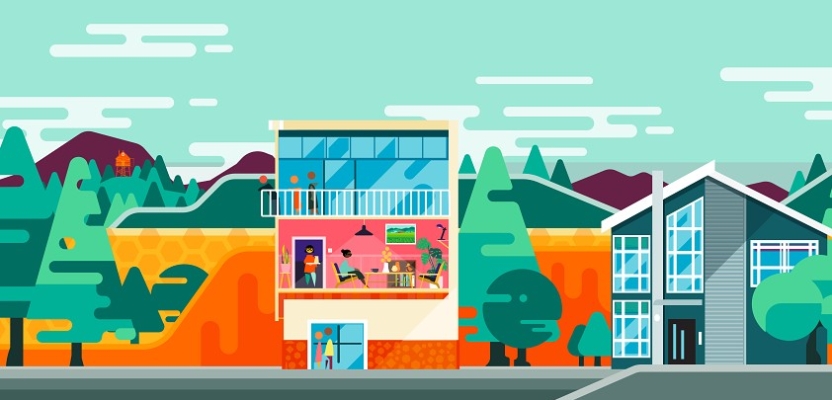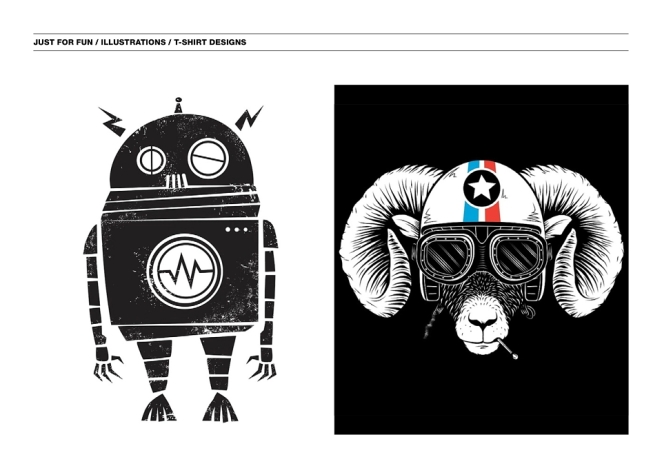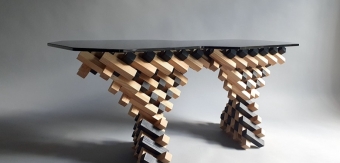When it comes to executing successful projects, hiring the right professionals is crucial. A project designer plays a vital role in shaping and bringing ideas to life. This article aims to guide you through the process of hiring a project designer, covering everything from understanding their role to finding the perfect fit for your project.
Who or What is a Project Designer?

A project designer is a creative professional who specializes in conceptualizing and visualizing ideas for various projects. They combine artistic skills with technical expertise to transform concepts into tangible designs. Whether it's a website, marketing campaign, or product development, a project designer's role involves understanding client needs, generating innovative ideas, and creating visually appealing designs that align with the project's objectives.
In today's fast-paced and visually driven world, project designers play a crucial role in the success of various initiatives. A project designer is a creative professional who possesses a unique blend of artistic skills, technical expertise, and problem-solving abilities. They are responsible for transforming abstract ideas and concepts into visually appealing designs that communicate messages effectively and achieve project objectives.
Conceptualizing and Visualizing Ideas
A project designer's primary task is to take a client's ideas, goals, and requirements and translate them into tangible visual designs. They have a keen eye for aesthetics and understand how to create designs that captivate the target audience. By working closely with clients and stakeholders, project designers gain a deep understanding of the project's essence and translate it into visual representations.
Balancing Creativity and Functionality
Project designers excel at striking the delicate balance between creative expression and functional design. They not only create visually stunning designs but also ensure that they are practical, user-friendly, and aligned with the project's objectives. Whether it's designing a website, crafting a brand identity, or creating marketing collateral, project designers consider usability, accessibility, and brand consistency throughout the design process.
Problem Solving and Innovation
Projects often come with unique challenges and constraints. A skilled project designer approaches these challenges as opportunities for innovation and problem-solving. They are adept at finding creative solutions to design problems, adapting to evolving project requirements, and delivering designs that meet the client's expectations. Project designers bring fresh perspectives and innovative ideas to the table, pushing boundaries and creating designs that stand out from the crowd.
Collaboration and Communication
Effective communication and collaboration are integral to a project designer's role. They work closely with clients, project managers, copywriters, developers, and other stakeholders to ensure that the design aligns with the project's overall vision. Project designers actively seek feedback, incorporate revisions, and maintain open lines of communication throughout the design process. Their ability to collaborate seamlessly with cross-functional teams enhances the efficiency and effectiveness of the project.
Technical Proficiency
Project designers are well-versed in various design tools and software. They possess a solid foundation in design principles, typography, colour theory, and layout composition. Whether it's Adobe Creative Suite, Sketch, Figma, or other industry-standard tools, project designers leverage their technical proficiency to create high-quality designs that meet industry standards and client expectations.
Keeping Up with Trends and Industry Standards
The design landscape is constantly evolving, with new trends, technologies, and best practices emerging regularly. A project designer stays up to date with the latest design trends, user experience principles, and industry standards. They continuously refine their skills, explore new techniques, and adapt their design approach to ensure their work remains relevant and impactful.
How to Find and Hire the Right Project Designer
Define Your Project Requirements
Before initiating the hiring process, it's essential to have a clear understanding of your project requirements. Define the scope, objectives, timeline, and budget for your project. This clarity will help you narrow down your search and find a project designer who possesses the specific skills and experience needed for your project.
Evaluate Portfolios and Previous Work
Request portfolios or samples of previous work from potential project designers. Take the time to carefully examine their design style, versatility, and ability to deliver projects similar to yours. Look for designers who demonstrate creativity, attention to detail, and a good understanding of your industry or niche. Consider the visual appeal, coherence, and overall quality of their designs.
Consider Experience and Expertise
Assess the experience and expertise of project designers under consideration. Look for individuals who have a track record of working on projects similar in scale and complexity to yours. Consider their proficiency in relevant design software, project management skills, and knowledge of industry-specific trends. Their experience and expertise will contribute to the successful execution of your project.
Check References and Client Testimonials
Request references from the project designer's previous clients or employers. Reach out to these references to gain insights into the designer's professionalism, work ethic, communication skills, and ability to meet deadlines. Client testimonials can provide valuable information about the designer's strengths and weaknesses. This feedback will help you make an informed decision and build confidence in your choice.
Cultural Fit
Beyond technical skills and experience, cultural fit is an important consideration. Assess whether the project designer aligns with your company's values, communication style, and work ethics. Consider their ability to collaborate effectively, adapt to your project's requirements, and handle feedback. A harmonious working relationship will foster better communication, collaboration, and overall project success.
Collaborate on a Small Project or Trial Period
To further assess a project designer's skills and fit, consider collaborating on a small project or offering a trial period. This allows you to evaluate their design process, communication style, and ability to meet deadlines. It also gives the designer an opportunity to showcase their expertise and understand your project requirements in practice.
Negotiate Terms and Contract
Once you have identified the right project designer, discuss and negotiate the terms of the project, including timelines, deliverables, payment structure, and ownership rights. It is advisable to have a written contract that outlines these terms and protects the interests of both parties involved.
Maintain Effective Communication
Throughout the hiring process and the duration of the project, maintain open and effective communication with the project designer. Clarify expectations, provide constructive feedback, and address any concerns promptly. A transparent and collaborative communication channel will contribute to a successful working relationship.
Where to Look for Project Designers
Online Job Boards
Popular job boards such as Indeed, LinkedIn, Behance, and Dribbble are excellent resources for finding project designers. Post your job requirements and screen candidates based on their profiles, resumes, and portfolios. These platforms often attract a wide range of design professionals actively seeking new opportunities.
Design Agencies
Design agencies can be a valuable source for finding project designers. These agencies have a pool of talented designers with expertise in various domains. Collaborating with an agency ensures a streamlined hiring process, as they can provide recommendations based on your project requirements. Agencies also offer the advantage of having access to a broader talent pool and resources.
Freelance Platforms
Freelance platforms like Upwork, Fiverr, Freelancer, and Toptal connect businesses with freelance project designers. These platforms allow you to browse through designer profiles, review feedback from previous clients, and assess their expertise and portfolio. You can communicate directly with potential candidates and discuss your project requirements before making a hiring decision.
Professional Networking
Leverage your professional network to find project designers. Reach out to colleagues, industry contacts, and fellow business owners who have previously worked with project designers. They may be able to recommend talented designers or connect you with individuals who have the required skills and experience.
Industry-specific Events and Conferences
Attend industry events, conferences, and design meetups where you can network with professionals in the design community. These events provide opportunities to meet project designers in person, view their work firsthand, and discuss potential collaborations. Building connections within the industry can lead to valuable recommendations and referrals.
Online Design Communities
Explore online design communities and forums like Creativepool, Behance, and Dribbble. These platforms allow designers to showcase their portfolios and connect with potential clients. Engage with the community, post your project requirements, and explore designers who align with your project's vision. Participating in these communities also provides insights into current design trends and allows you to discover emerging talent.
Social Media
Utilize social media platforms like Instagram, Twitter, and LinkedIn to find project designers. Follow design-related hashtags, join design groups, and engage with the design community. Many top project designers use social media to share their work, connect with clients, and promote their services. Through these platforms, you can discover talented designers and reach out to them directly.
Creativepool
Creativepool, mentioned earlier, is a specialized platform that connects creative professionals with businesses. It offers a comprehensive database of designers across various disciplines. By creating a detailed job listing on Creativepool, you can attract talented project designers who are actively seeking new opportunities. Browse designer profiles, review portfolios, and communicate directly with candidates through the platform.
Using Creativepool to Find Project Designers

Looking to hire a top project designer? Creativepool has thousands of super talented members waiting to make your projects work better for their users.
There are 3 ways for you to find a project designer on Creativepool.
1. Search and Contact
Want greater control of who you work with and the process behind it? Searching for talent directly and then handpicking who you would like to work is a great way to be proactive in your talent hunting.
Simply search for project designers and browse through the results. You will be able to look through projects, CVs/Resumes of the talent listed to make an informed decision on your next hire.
On Creativepool we use a series of indicators to rank our members based on job title. Looking through the top 25 ranked project designers is also a powerful and quick way to view the best in talent on the platform.
Once you have found someone whose style and experience works for you, contact them directly by clicking on the message tab. Searching is ideal if you have a very specific idea on who it is that you would like to be working with.
2. Post a studiogig
Looking for a freelance project designer? The quickest way to find available talent is to advertise your brief. With us, briefs for individuals are called studiogigs.
Posting your role is formulated to be quick and easy and once you have posted your role, we get busy behind the scenes selecting the best talent to send out your brief to and then post the role on the jobs board. Once you have advertised your brief then just relax and wait for applicants to come to you directly!
3. Post a job
If you are looking for a permanent hire, then advertising a project design job is the way for you to attract talent. The process is identical to posting a studiogig.
Once you have posted your role we will check the details of the adverts, send out job alerts to our community that best match your criteria and post on the jobs board. Like studiogigs applicants will apply to you direct.
Whether posting a job or a studiogig or searching for talent you are in control on who you hire. You are under no obligation to choose any of the applicants, and you negotiate with them directly on rates.
If you need any help on your talent hunt. You can chat with us or send us a message. We'd be happy to help.







